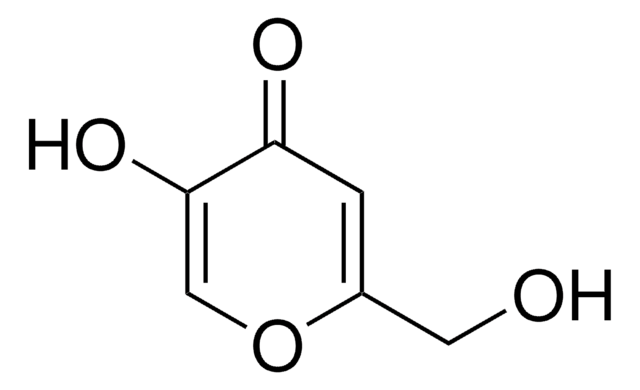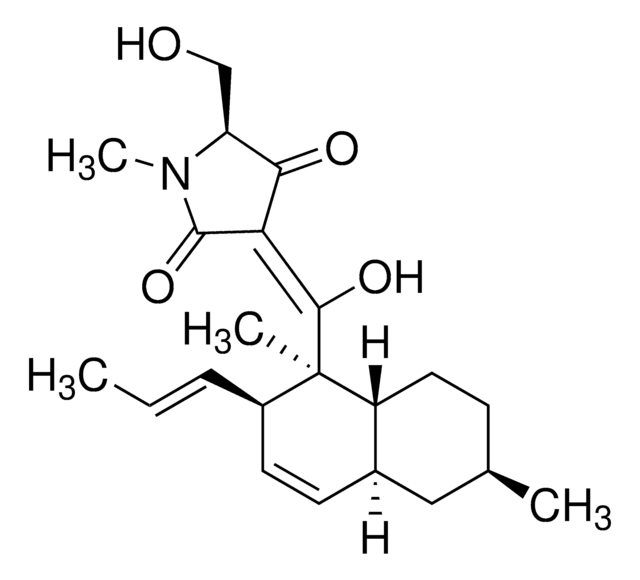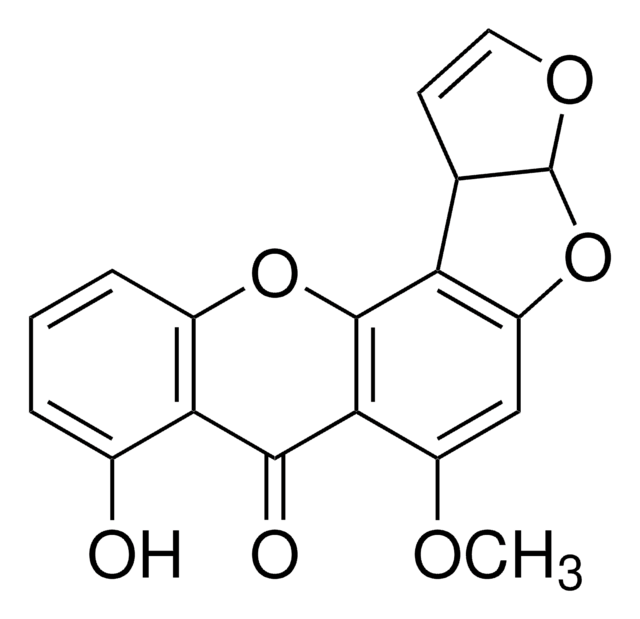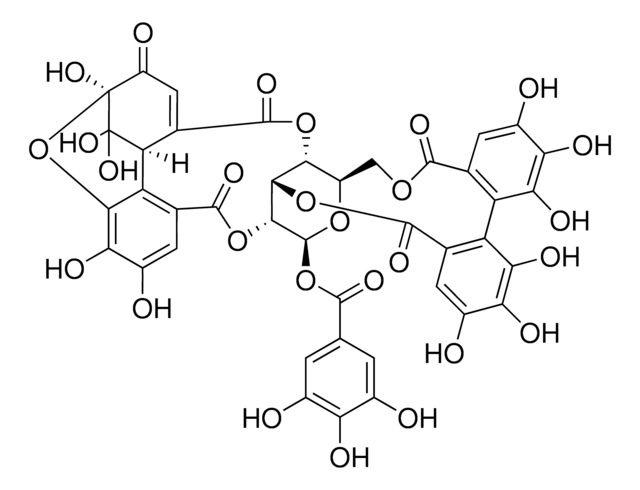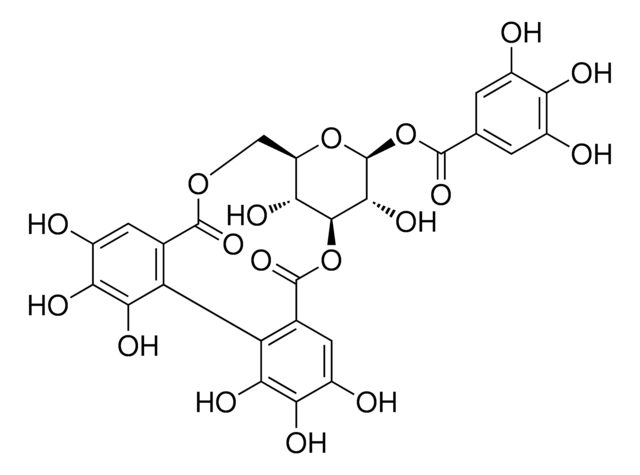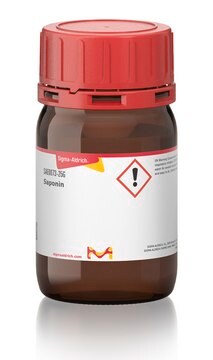SML0724
Bikaverin
from Fusarium subglutinans, ≥98% (HPLC)
Sinónimos:
6,11-Dihydroxy-3,8-dimethoxy-1-methylbenzo[b]xanthene-7,10, 12-trione, Lycopersin, NSC 215139
About This Item
Productos recomendados
biological source
Fusarium subglutinans
Quality Level
assay
≥98% (HPLC)
form
powder
solubility
DMSO: 0.5 mg/mL (may require sonication and heating)
chloroform: 0.5 mg/mL
dichloromethane: 0.5 mg/mL
storage temp.
−20°C
InChI
1S/C20H14O8/c1-7-4-8(26-2)5-10-12(7)17(23)15-18(24)13-9(21)6-11(27-3)16(22)14(13)19(25)20(15)28-10/h4-6,24-25H,1-3H3
InChI key
ZOQMSOSJEWBMHP-UHFFFAOYSA-N
Biochem/physiol Actions
Reconstitution
signalword
Danger
hcodes
pcodes
Hazard Classifications
Acute Tox. 3 Oral
Storage Class
6.1C - Combustible acute toxic Cat.3 / toxic compounds or compounds which causing chronic effects
wgk_germany
WGK 3
flash_point_f
Not applicable
flash_point_c
Not applicable
Elija entre una de las versiones más recientes:
¿Ya tiene este producto?
Encuentre la documentación para los productos que ha comprado recientemente en la Biblioteca de documentos.
Nuestro equipo de científicos tiene experiencia en todas las áreas de investigación: Ciencias de la vida, Ciencia de los materiales, Síntesis química, Cromatografía, Analítica y muchas otras.
Póngase en contacto con el Servicio técnico

